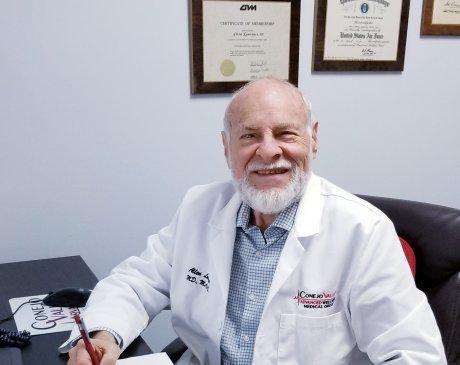- 21103 Vanowen St Woodland Hills, CA 91303 | Call us today!
- 310-879-9266
Understanding Osteoporosis in the United States: Prevalence, Causes, and Treatment with HRT and TRT

Osteoporosis is a major public health concern in the United States, affecting millions of individuals, particularly postmenopausal women. This condition, characterized by weakened bones and an increased risk of fractures, has significant implications for healthcare costs, quality of life, and morbidity. This article provides an overview of the national statistics on osteoporosis, explores the reasons behind its prevalence, and discusses the role of hormone replacement therapy (HRT) and testosterone replacement therapy (TRT) in its treatment.
Prevalence of Osteoporosis in the U.S.
Osteoporosis affects approximately 10 million Americans, with an additional 44 million individuals having low bone mass, placing them at increased risk for osteoporosis and fractures. The condition is predominantly seen in older adults, with about half of women and up to a quarter of men over the age of 50 expected to experience an osteoporotic fracture in their lifetime.
- Gender Differences:
- Osteoporosis is more prevalent in women, who account for about 80% of cases.
- This disparity is largely due to the hormonal changes that occur during menopause, which significantly accelerate bone loss.
- Age Factor:
- The risk of osteoporosis increases with age.
- Postmenopausal women and elderly men are at the highest risk, reflecting the cumulative effects of bone density loss over time.
Reasons for Osteoporosis
Several factors contribute to the development of osteoporosis, with hormonal changes playing a central role.
Hormonal Changes:
- Menopause: The decline in estrogen levels during menopause is a primary risk factor for osteoporosis in women. Estrogen is crucial for maintaining bone density, and its reduction leads to accelerated bone loss.
- Andropause: In men, a gradual decline in testosterone levels, known as andropause, can contribute to osteoporosis. While this process is less abrupt than menopause, it still poses a significant risk for bone density reduction.
Other Risk Factors:
- Genetics: A family history of osteoporosis or fractures can increase an individual’s risk.
- Lifestyle Factors: Poor nutrition, particularly low intake of calcium and vitamin D, physical inactivity, smoking, and excessive alcohol consumption are significant lifestyle-related risk factors.
- Medical Conditions and Medications: Conditions such as rheumatoid arthritis, hyperthyroidism, and long-term use of glucocorticoids can contribute to bone loss and increase the risk of osteoporosis.
Treatment of Osteoporosis with HRT and TRT
Hormone replacement therapies play a crucial role in managing osteoporosis, particularly in addressing the hormonal deficiencies that contribute to bone loss.
Hormone Replacement Therapy (HRT):
- Indication: HRT is primarily used in postmenopausal women to alleviate menopausal symptoms and prevent bone loss associated with estrogen deficiency.
- Effectiveness: HRT has been shown to significantly reduce the risk of fractures by maintaining or increasing bone density. It is especially effective when initiated around the time of menopause.
- Risks: Despite its benefits, long-term use of HRT is associated with increased risks of breast cancer, heart disease, stroke, and blood clots. Therefore, HRT is typically recommended for the shortest duration necessary and at the lowest effective dose to mitigate these risks.
Testosterone Replacement Therapy (TRT):
- Indication: TRT is used in men with clinically low testosterone levels and symptoms of testosterone deficiency, including those at risk for osteoporosis.
- Effectiveness: TRT can help improve bone density and reduce the risk of fractures in hypogonadal men. It works by restoring testosterone levels, which are important for bone health.
- Risks: Potential risks of TRT include prostate enlargement, cardiovascular issues, and erythrocytosis (increased red blood cell count). Regular monitoring is essential to manage these risks effectively.
Osteoporosis remains a significant health issue in the United States, particularly among postmenopausal women and older adults. Hormonal changes, lifestyle factors, and certain medical conditions contribute to the development of this condition. Hormone replacement therapy (HRT) and testosterone replacement therapy (TRT) are effective treatments for preventing bone loss and reducing fracture risk, but they come with their own sets of risks that require careful management. Understanding the prevalence, causes, and treatment options for osteoporosis is crucial for healthcare providers and patients alike in managing this widespread condition.
Sources:
- National Osteoporosis Foundation (NOF)
- Centers for Disease Control and Prevention (CDC)
- American Association of Clinical Endocrinologists (AACE)

Article by Dr. Allen Lawrence, M.A., M.D., Ph.D.




